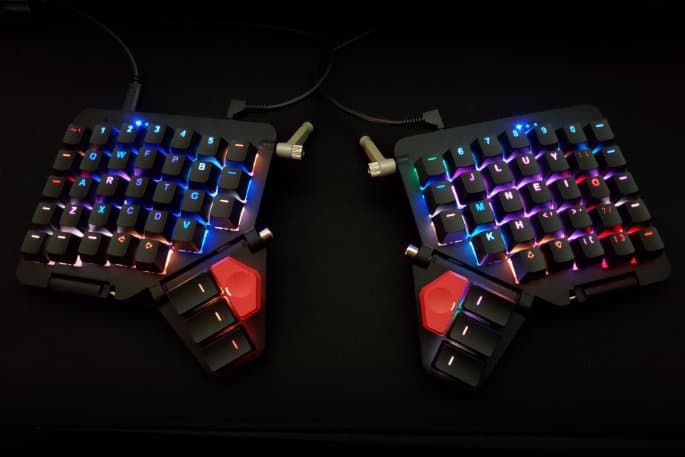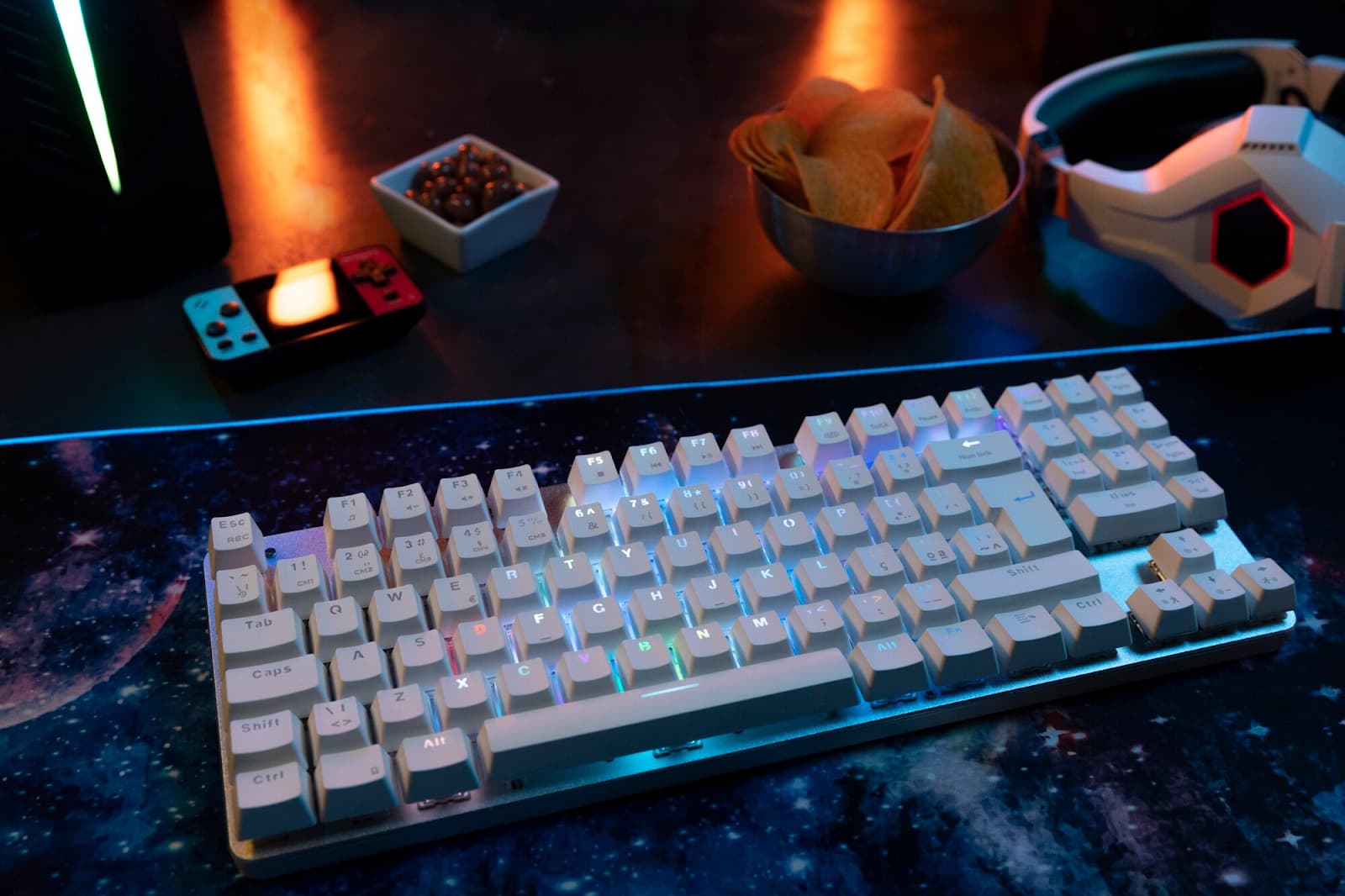In the fast-paced world of live casino streams, every second counts. Casino streamers, chat hosts, and online dealers rely heavily on quick typing — not just to keep up with viewers but to manage tools, respond to chat, trigger macros, and interact with systems behind the scenes. The right keyboard layout can make all the difference.
Many who work with non Gamstop casinos are already familiar with the need for reliable tools and fast responses. But what’s often overlooked is how much the layout of the keyboard itself can influence productivity, accuracy, and even physical strain.
Why Layout Matters in Live Casino Settings
Typing is one of the most repetitive tasks in live casino work. It’s not just about replying to viewers or inputting game commands — it’s about doing so accurately and quickly, often while speaking, switching scenes, or juggling multiple tabs. Casino streamers and online dealers work in high-pressure settings, where small mistakes can interrupt the flow or impact player engagement.
QWERTY, the default layout, was never built for this kind of work. Its scattered key placement creates excessive finger travel, especially during bursts of chat activity. In a setting where quick interaction is essential, the lag caused by unnecessary hand movement adds up fast. Over time, this can lead to fatigue, errors, and lost momentum during live sessions.
Switching to a layout that aligns with real-world typing needs can help streamers stay locked into the session without their hands falling behind. Whether it’s managing a queue of players, firing off automated replies, or adjusting scenes in OBS, keyboard layout is part of the performance — and performance matters.
Key Features to Look For
Here’s what to consider when evaluating a keyboard layout for streaming or live dealing:
- Home row usage: The more letters that fall under your resting fingers, the better. A good layout keeps your hands on the home row as much as possible, reducing strain from constant reaching.
- Low lateral movement: Moving fingers side to side over and over again can cause fatigue. The best layouts minimise this by placing common keys within easy vertical reach.
- Balanced hand usage: A layout should evenly distribute work between the left and right hand, rather than loading one side more heavily. This balance prevents overuse and improves rhythm.
- Shortcut compatibility: If you rely on shortcuts to control OBS scenes, respond to chat, or trigger effects, choose a layout that doesn’t move key combinations like Ctrl+C, Ctrl+V, or Alt+Tab.
- Adaptability: Some layouts are easier to learn than others. If you need results quickly, go for one with a gentle learning curve or gradual remapping options.
Layouts Worth Considering
Colemak
Colemak strikes a balance between familiarity and efficiency. It keeps most of QWERTY’s punctuation and shortcut keys in place — important for streamers using quick commands and system hotkeys — while rearranging letters to prioritise comfort and common usage.

What sets Colemak apart is how it reduces finger movement without overwhelming the user. By changing only a small number of keys, it speeds up adaptation while easing strain over time. For casino streamers responding to fast chat messages, typing commands, and running live commentary, that makes a noticeable difference in both performance and comfort.
It’s also helpful for streamers who engage with their audience in multiple languages, as Colemak’s logic applies well to English-based multilingual inputs. The learning curve is manageable, especially with free training tools, and many who switch say they never look back.
Workman
Workman takes things further by analysing not just letter frequency but also finger movement patterns and physical effort. It prioritises vertical finger motion over lateral movement and avoids repetitive use of weaker fingers like the pinky.
This layout shines during long sessions — ideal for dealers who are typing game status updates, responding to players, or adjusting interface settings across hours of play. Because Workman spreads out the typing workload more evenly, it’s known to reduce fatigue that builds up in marathon shifts.
Workman is especially powerful when paired with ergonomic or split keyboards, which are increasingly popular among casino workers using home setups. It suits those who are already thinking about long-term wrist and hand comfort but want something deeper than just a new keyboard shape.
QGMLWY and Norman (for Niche Setups)
If you’re using a compact ortholinear keyboard, or you’ve outgrown the more popular alternatives, QGMLWY and Norman offer unique logic worth exploring. These layouts are less known but loved by keyboard tinkerers and professionals who want precise control.
QGMLWY reduces same-finger combinations, minimises lateral movement, and focuses on keeping typing vertical and balanced. Norman, meanwhile, shifts frequent keys to more ergonomic positions while retaining some familiar QWERTY placements.
For casino streamers working in tight spaces or using hotkey-heavy macros — especially in OBS setups or browser-based casino panels — these layouts provide better control and rhythm without finger gymnastics.
They’re not the easiest to learn, but for those deep into keyboard customisation and performance, they offer a fresh and satisfying experience.
Stick with QWERTY — but Optimise It
Not everyone has time to relearn a layout, and that’s fair. If you want to stick with QWERTY, there are still ways to make it work smarter. Start with your tools: use mechanical keyboards with tactile switches, remap underused keys to macros, and fine-tune your keycap layout to prioritise comfort.
For casino streamers and dealers, having dedicated macro keys for common responses or actions can offset the inefficiency of QWERTY. Using layers (like via QMK firmware) lets you access multiple commands with minimal finger movement.
Even simple changes — like moving from a staggered layout to an ortholinear QWERTY or combining your keyboard with a stream deck — can ease stress and improve flow. It’s about using what you already know, but pushing it to work better for the job.
Don’t Ignore Ergonomics
Ergonomics and layout work best together. Even if you switch to the most efficient key arrangement, a bad desk setup can still cause strain and injury. Casino streamers and live dealers spend hours seated in fixed postures, often leaning forward or staying rigid while monitoring games, chat, and controls.
Typing with bent wrists, slouched shoulders, or unsupported elbows can lead to long-term discomfort. Add in the repetition of typing commands or interacting with chat, and the risks multiply. That’s why it’s important to look beyond just the keyboard and consider how everything from chair height to screen angle affects your body.
A layout designed for comfort only works if your environment supports it. Consider pairing your chosen layout with:
- A split or tented keyboard to promote a natural wrist angle
- A chair that keeps elbows level with the desk
- An external monitor positioned at eye level
- A low-profile keyboard with soft key switches to reduce impact
Some streamers also benefit from using additional gear like foot pedals for repetitive commands or dictation tools to reduce overall keystroke volume. Together, these small changes help create a setup where long sessions feel less demanding on your body.
Final Thought
Live casino work demands precision, speed, and focus. Whether you’re running a stream or managing a live table, your keyboard is one of your most-used tools. Choosing a layout that supports speed and comfort isn’t just a productivity move — it’s about staying sharp and reducing stress across long sessions.
It might take time to explore alternatives, but the reward is worth it: smoother sessions, fewer typing errors, and hands that last through the shift without wearing out.



